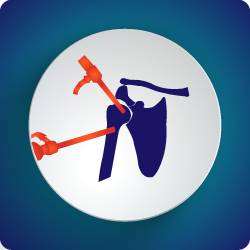
Rotator Cuff Repairs
Orthopaedic Surgeon – Dr Chien-Wen Liew
Rotator cuff tears are a common injury that may require surgery. Not all tears require repair. Once your rotator cuff has been assessed, a period of rehabilitation is usually commenced. This includes physiotherapy. Some rotator cuff tears require emergent treatment. This includes acute tears in young patients involving the subscapularis or infraspinatus. Often, a supraspinatus tear can be left without repair, as long as appropriate rehabilitation is commenced.
During evaluation of the rotator cuff, an MRI is usually performed if the cuff tear is not new. This enables a surgeon to determine if the muscles have degenerated to the point where a repair is impossible. This occurs when the rotator cuff tear is old, or if the muscle has undergone degeneration. The amount of fat in the muscle suggests whether or not a cuff is repairable. Muscles with a high content of fat will not function well after a repair.
When a rotator cuff tendon requires repair, an arthroscopic or open approach can be performed. Dr Chien-Wen Liew performs all rotator cuff repairs arthroscopically, except some extremely large tears, or those involving the subscapularis tendon, which he performs via an open approach. An arthroscopic rotator cuff repair uses a small camera to enter the shoulder joint and inspect all structures in the shoulder.
A special grasper is used to pass specially made rotator cuff sutures through the tendon which are then inserted into the bone using anchors. Dr Liew uses a knotless anchor made of PEEK. In general, small tears require 2 rows of anchors (Total 4 anchors) to hold down the tear.
The anchors are secured into the bone using a drill and specially designed anchors made to withstand pull out.
Once the anchors are in place, the shoulder is rotated to ensure that the rotator cuff repair has no flaps or areas where it is not holding well. After this time, the shoulder is placed into a shoulder immobiliser.
Post operatively, patients are kept in the sling for 6 weeks, allowed to perform pendular activities only. Depending on the size and type of the rotator cuff tear, an appropriate rehabilitation regimen is prescribed. The wound needs to be kept clean and dry for a period of 2 weeks, at which time your wounds are inspected. Dissolvable sutures are used meaning that nothing requires removal.
For more information, please contact the office of Dr Chien-Wen Liew: Phone – (08) 7099 0188
Thankyou for visiting this website. Please note that the information held within this site and on this page are for educational purposes only. Please consult your doctor or health professional always prior to considering any medical therapy or intervention. If you notice an error on this site, please use our contact form to let us know so we can rectify any issues. All information and graphics on this site are the property of Sempire Designs.
